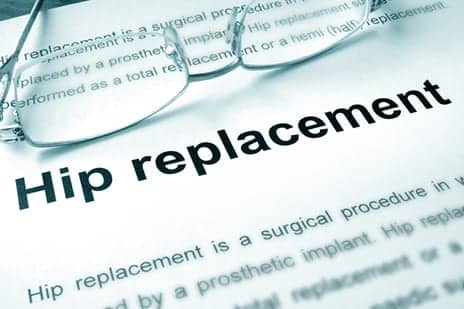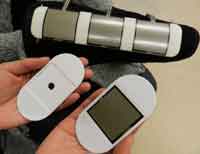A research team from Rush University Medical Center has identified a pair of biomarkers that may indicate which patients are likely to develop osteolysis after undergoing hip replacement surgery.
Osteolysis, defined as the destruction of bone tissue around the replacement joint, results in a need for a revision surgery.
The team, which published their findings recently in the Journal of Orthopaedic Research, hopes that this discovery could lead to tests that would enable surgeons to identify those patients in advance and adjust postoperative monitoring routines for them, as well as lead to treatments to prevent osteolysis in these patients.
“We are hopeful that early biomarkers for implant loosening will alert surgeons to be especially vigilant in their follow-up of at-risk patients and may eventually lead to treatments delaying or avoiding the need for revision surgery,” says the paper’s senior author D. Rick Sumner, PhD, chairperson of the Department of Cell & Molecular Medicine in Rush Medical College and the Mary Lou Bell McGrew Presidential Professor for Medical Research.
In the study, Sumner and his colleagues drew on a previous review of medical literature they had conducted, which identified 40 possible biomarkers of future osteolysis development, explains a media release from Rush University Medical Center.
They divided the markers into four groups based on their likelihood to predict osteolysis and focused on the two groups that were most likely. The researchers then winnowed the field of candidate proteins by eliminating markers found in blood rather than urine and those for which tests weren’t readily available.
Two combined biomarkers provided the strongest indication of risk
Ultimately they tested for the presence of seven biomarkers and compared findings to the medical history of the patients—16 of whom eventually had developed osteolysis. A biostatisican on the team then conducted an analysis to determine which combinations of the biomarkers correlated most with the osteolysis development.
“We looked at each marker independently, but none of them worked that well by themselves. Then he looked at panels of markers,” Sumner explains. “When we did that, we found we got a much better discrimination between patients that developed osteolysis and those that did not.”
The analysis found that a higher than normal levels of the connective tissue protein alpha CTX (a marker for bone resorption) and the immune response protein interleukin 6 (a marker of inflammation) were highly accurate in identifying patients at risk for osteolysis. The combination was detectable in patients up to 6 years before they were diagnosed with osteolysis.
“Another interesting finding in our study was that the preoperative levels of our two-biomarker panel were just as predictive of subsequent osteolysis as any of the postoperative levels,” notes Ryan Ross, PhD, an assistant professor of cell and molecular medicine at Rush, in the release.
“This follows some exciting genetic work by other researchers that tends to suggest that there may be a subset of patients that are just more prone to implant failure due to their underlying skeletal metabolism.”
To confirm the findings, researchers will need to analyze a larger cohort of hip replacement patients for whom similar specimen samples and medical information is available. Sumner expects that if the findings are confirmed and tests for the biomarkers are developed for hip replacement patients, “it would alert a surgeon that this is patient at higher risk and is a patient that probably would need to be followed more carefully.”
Sumner’s research also might yield a possible treatment for those patients. He currently is conducting another study funded by NIH looking at the feasibility of using osteoporosis medication to slow or reverse osteolysis, the release concludes.
[Source(s): Rush University Medical Center, Newswise]




